Please click here to access the main AHDB website and other sectors.
- Home
- Knowledge library
- Tomato crop damage caused by the leafminers, Tuta absoluta and Liriomyza spp.
Tomato crop damage caused by the leafminers, Tuta absoluta and Liriomyza spp.
To help you identify and distinguish between these two leafminer species found in the UK, read about the different features of crop damage they cause in tomato crops.
Go back to the tomato leafminer main page
If in doubt, growers should consult Defra PHSI.
Adult feeding
Liriomyza spp.
Adult female Liriomyza tend to migrate to the top of the crop canopy where they feed on the upper leaf surface causing numerous small bleached spots. When the population is large, this type of damage alone can destroy the leaves.
Female Tuta also tend to migrate to the top of the crop canopy to lay eggs but do not cause direct damage themselves.
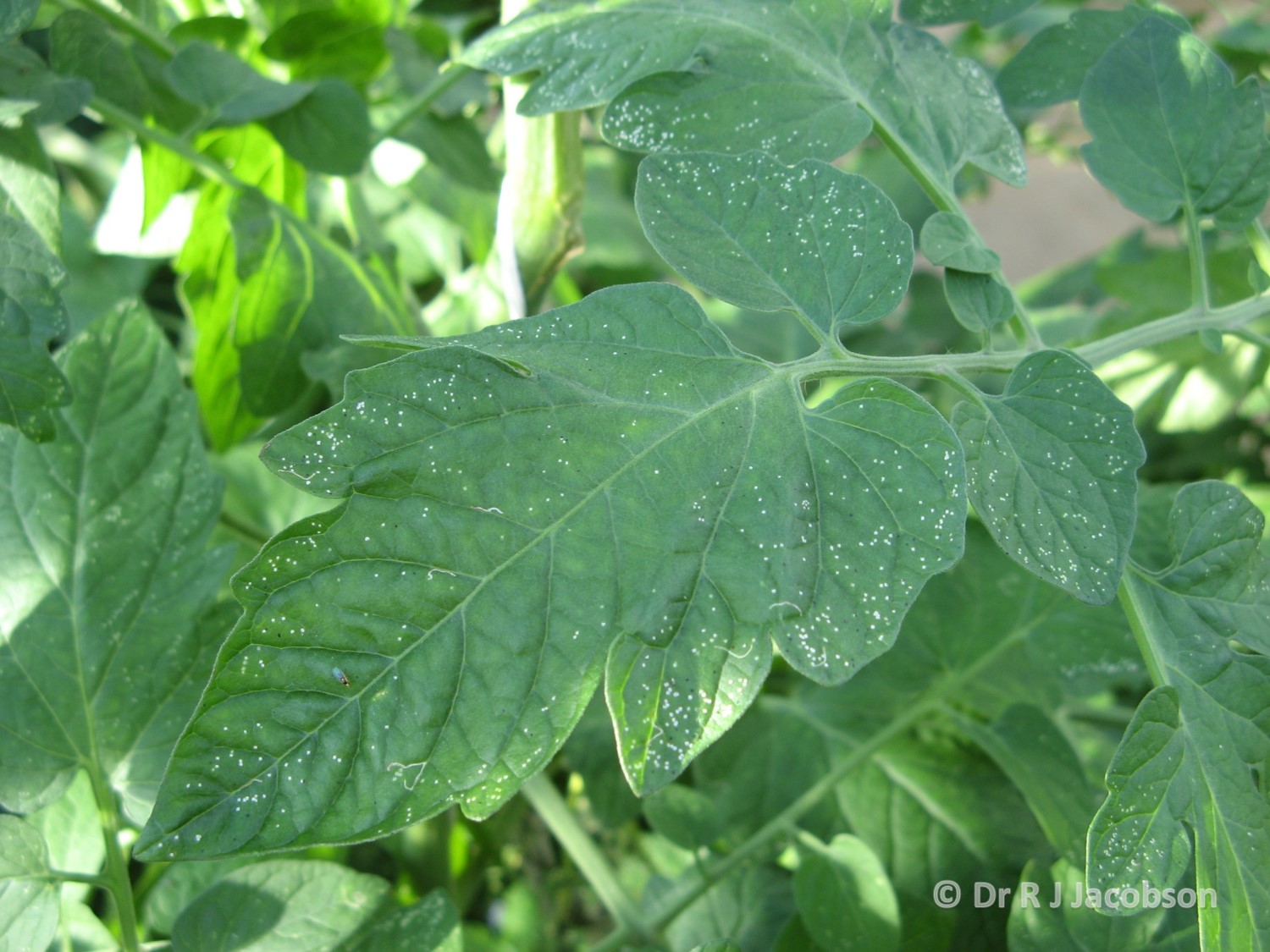
© Dr R J Jacobson
Shape of mines
Tuta absoluta
Tuta larvae produce a distinct ‘blotch’ mine with an accumulation of dark-coloured frass in one part of the mine.
Liriomyza bryoniae mines are linear with frass evenly distributed.
The notifiable pests, Liriomyza huidobrensis and L. trifolii, produce linear mines but they are more convoluted.
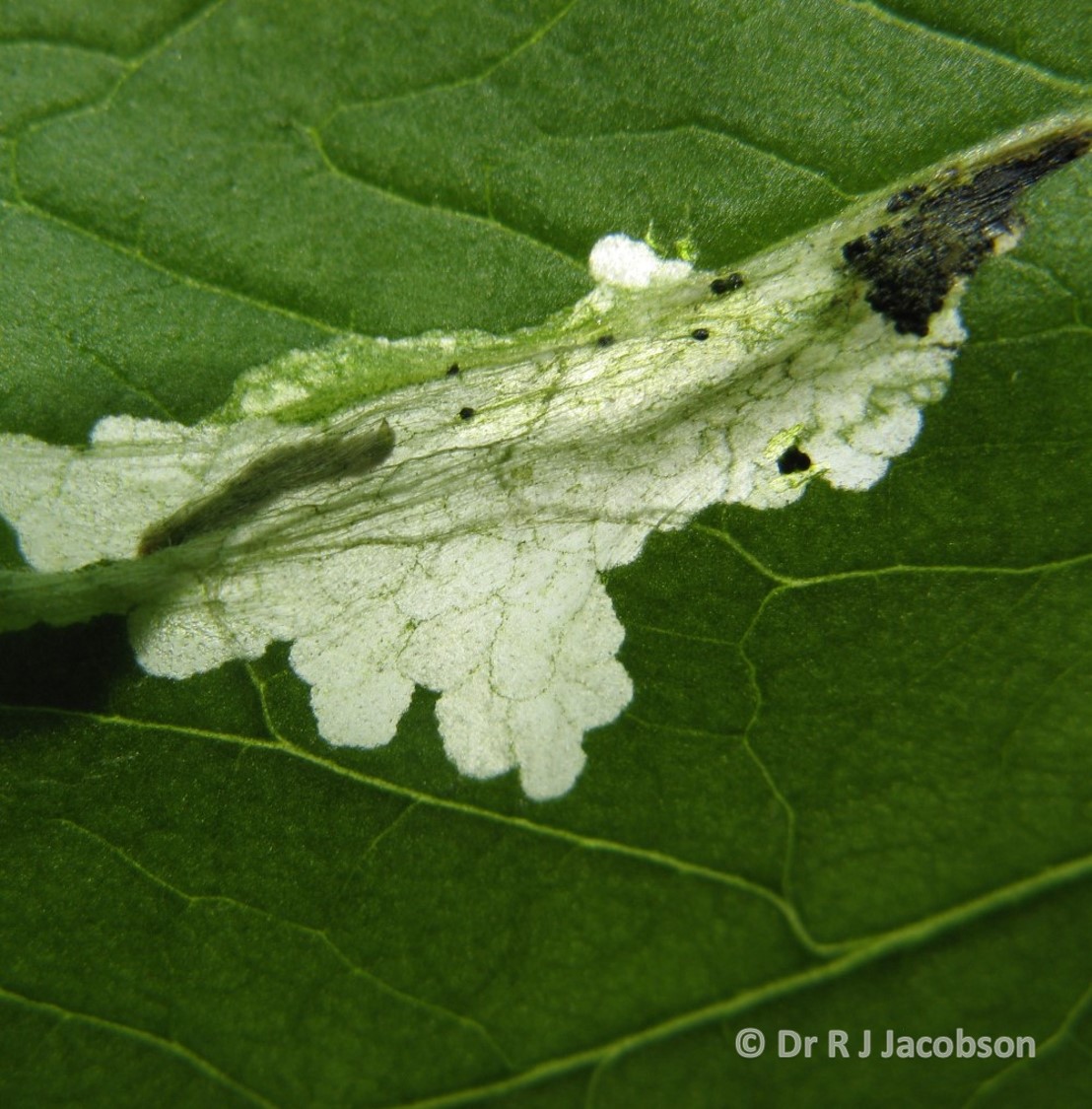
© Dr R J Jacobson
Liriomyza bryoniae
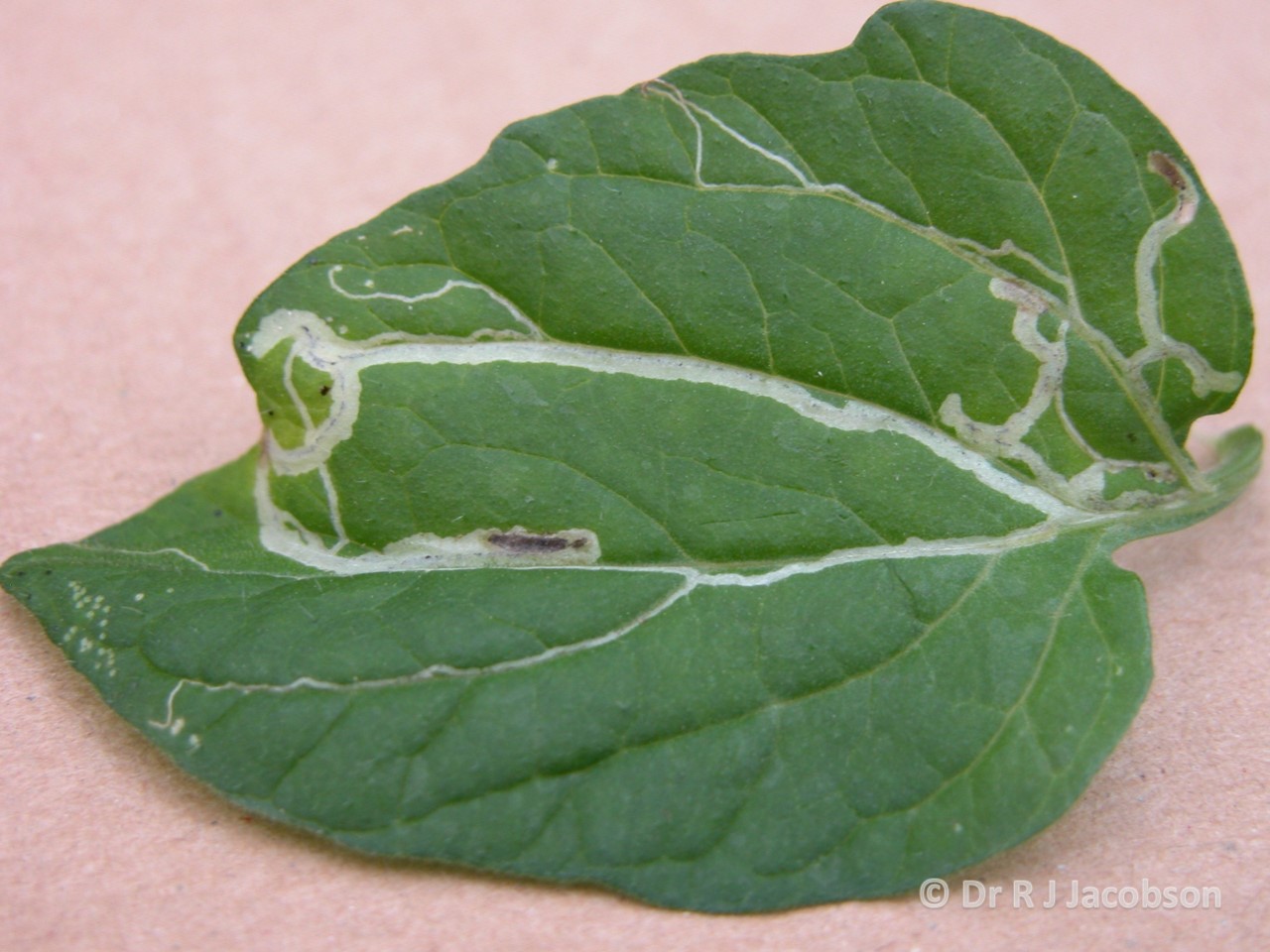
© Dr R J Jacobson
Liriomyza huidobrensis
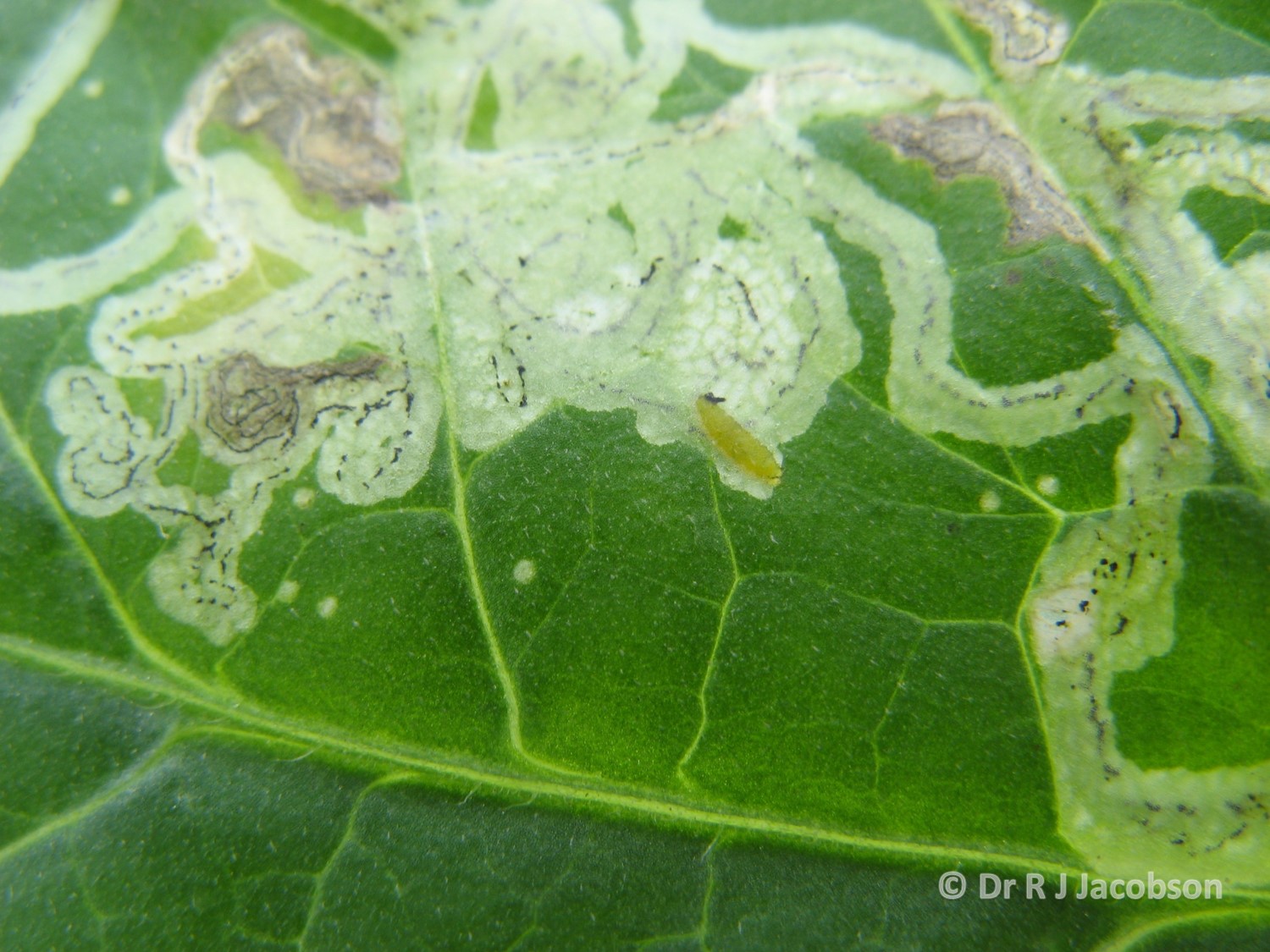
© Dr R J Jacobson
Damage to plant growing points
Tuta absoluta
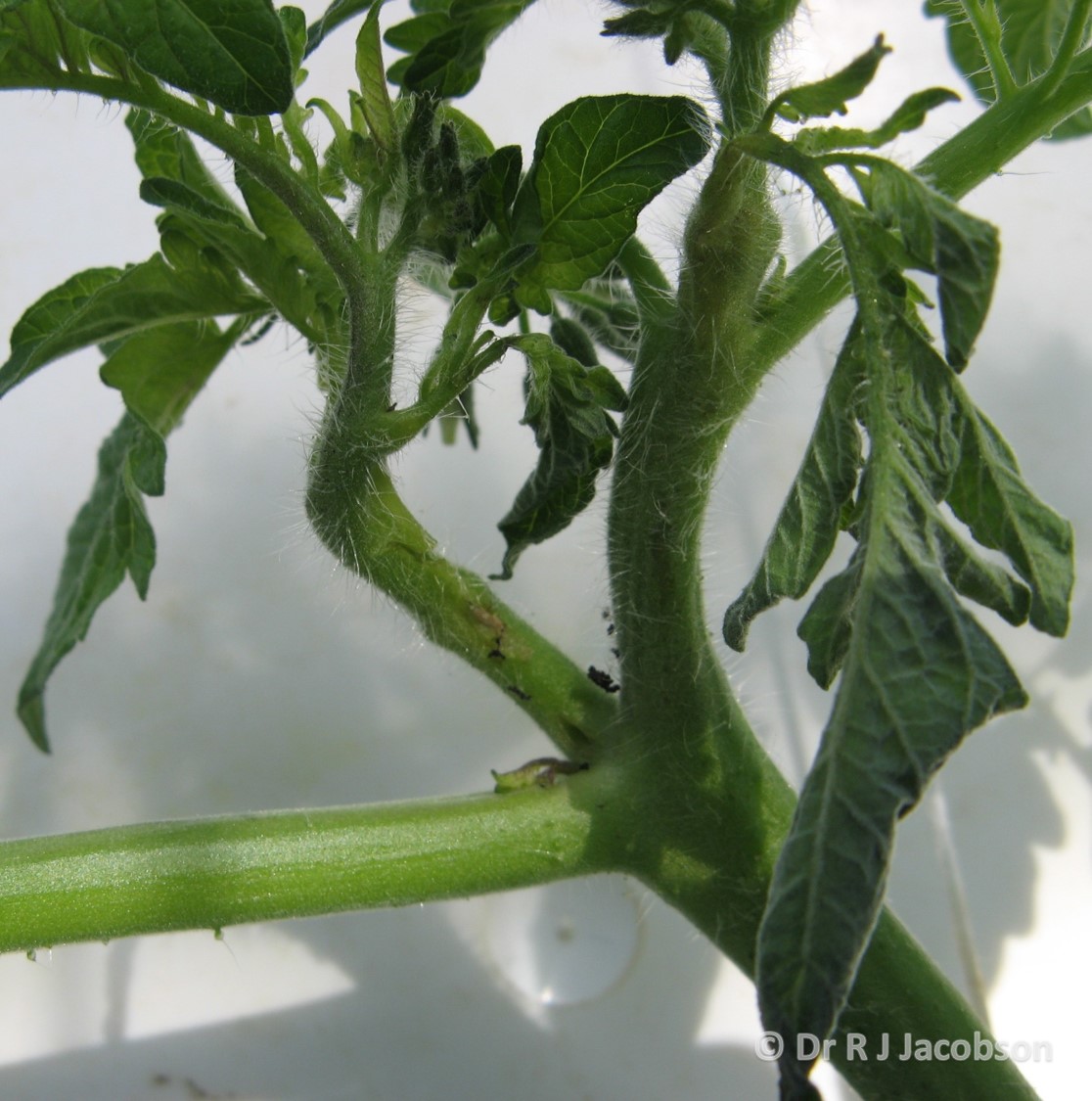
© Dr R J Jacobson
Under some conditions, which are not yet fully understood, young Tuta absoluta larvae migrate to the top of the plant where they graze more openly on the furled leaves. This is potentially very serious because it can rapidly result in destruction of the growing point.
Liriomyza spp.
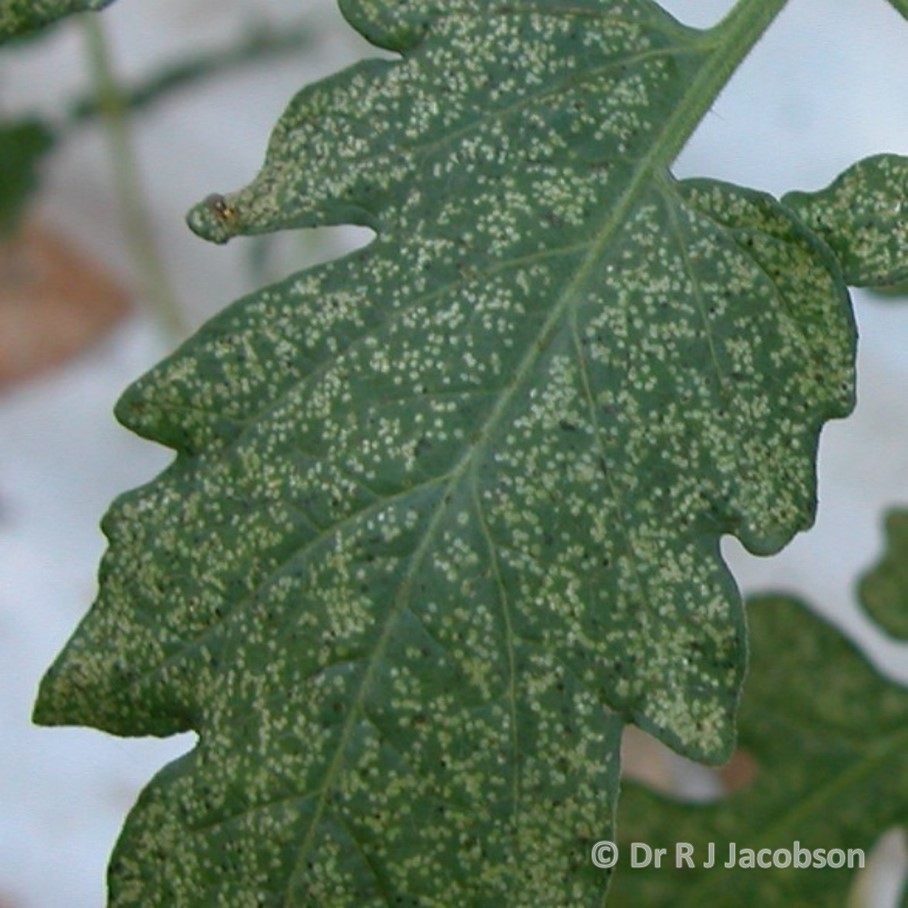
© Dr R J Jacobson
Liriomyza larvae do not cause grazing damage to the growing point as described for Tuta absoluta. However, when populations are very large, excessive feeding by adult Liriomyza can cause direct damage to young plant growth.
Damage to leaf petioles and stems
Tuta larvae sometimes tunnel into leaf petioles and stems. If the petiole is damaged, the whole leaf will shrivel and die. Weakened stems may break during routine crop work resulting in the loss of production from that plant for the remainder of the season.
Liriomyza larvae occasionally move into leaf petioles where they have the same effect as Tuta. However, they are not known to enter plant stems.
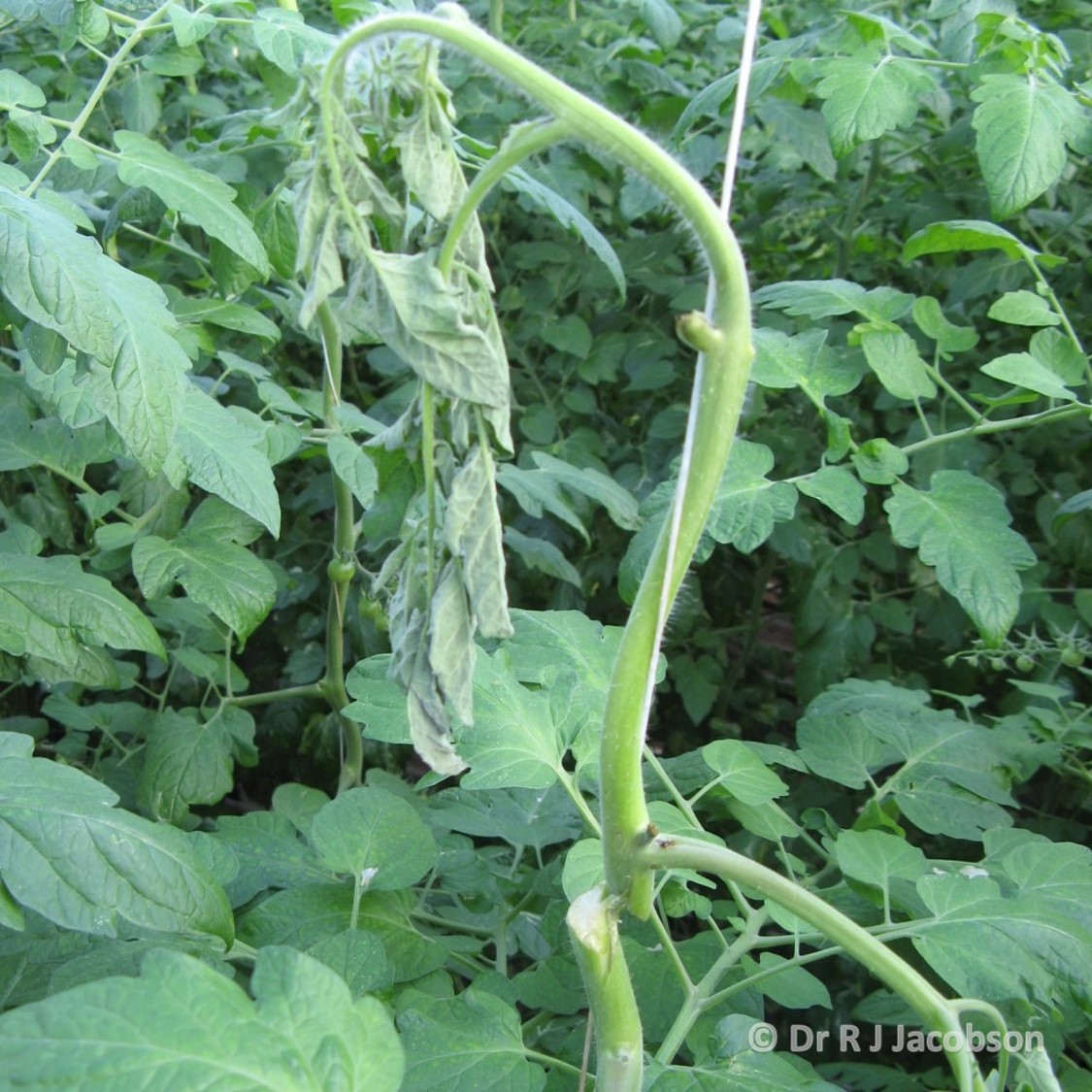
© Dr R J Jacobson
Fruit damage by Tuta absoluta
If a Tuta larva penetrates a fruit, the entrance point is often below the calyx where it may be overlooked during crop monitoring. However, the exit holes are larger and more obvious.
A Tuta larva may still be present inside a fruit when it is harvested. If so, it will continue to develop and then emerge in transit or storage.
Liriomyza larvae do not tunnel in fruit.
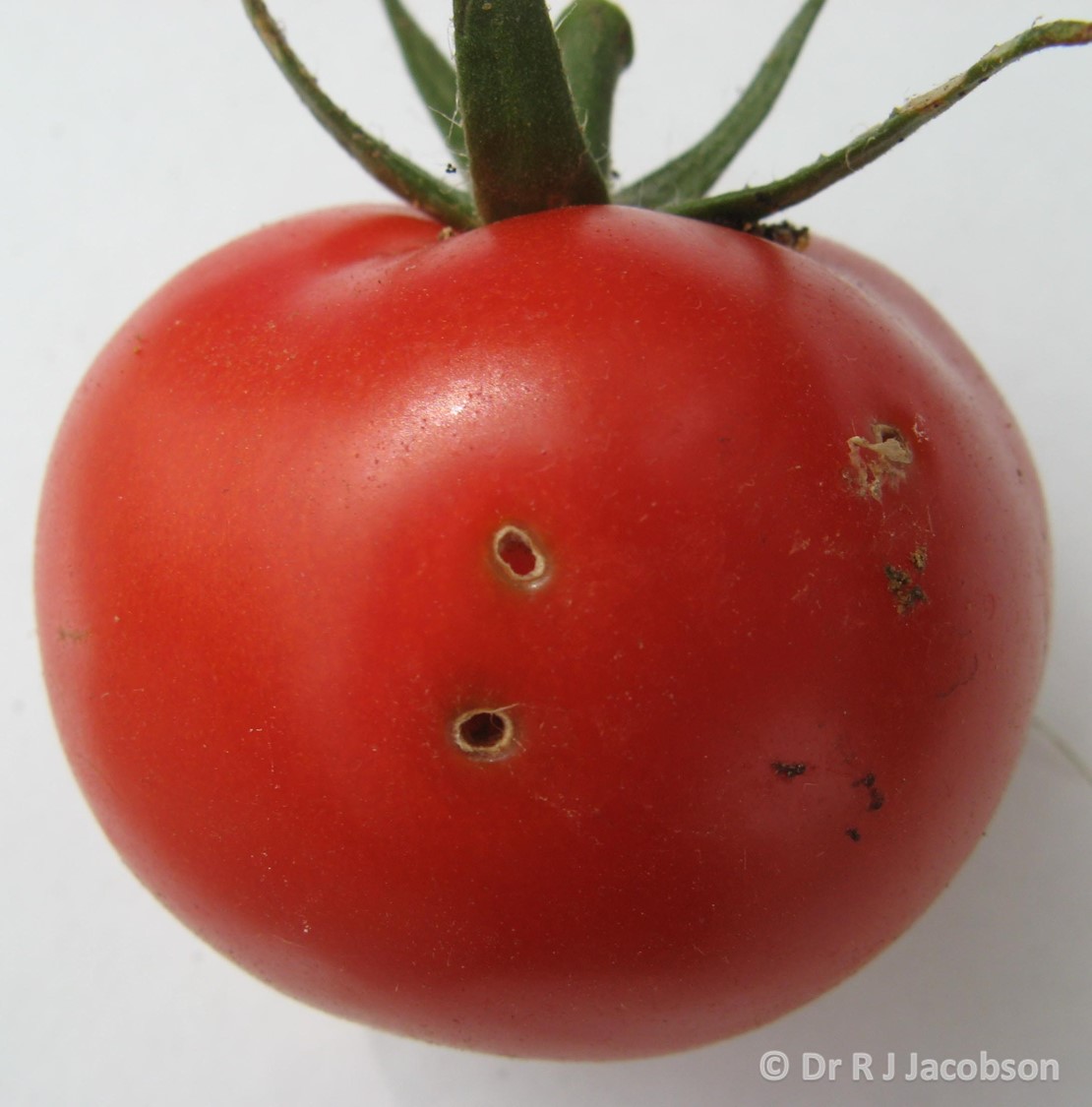
© Dr R J Jacobson
Useful links
Learn about the different biological features between Tuta absoluta and Liriomyza spp.
Read information about how to control Tuta absoluta in your crops
Find more news and information on integrated pest management via our IPM hub
Author
The content on this page was authored for AHDB by Dr Rob Jacobson (Rob Jacobson Consultancy Ltd).
Topics:
Sectors:
Tags:

